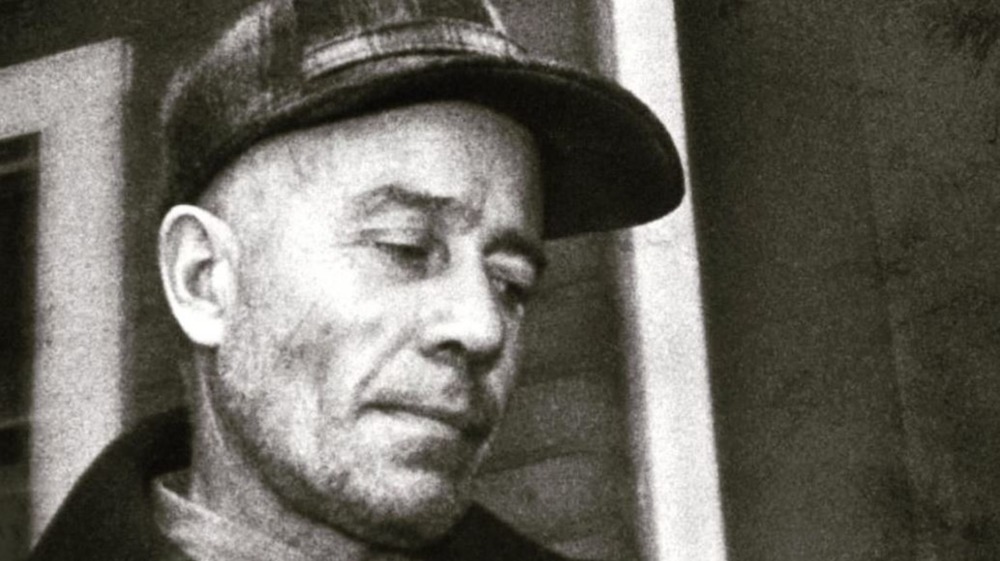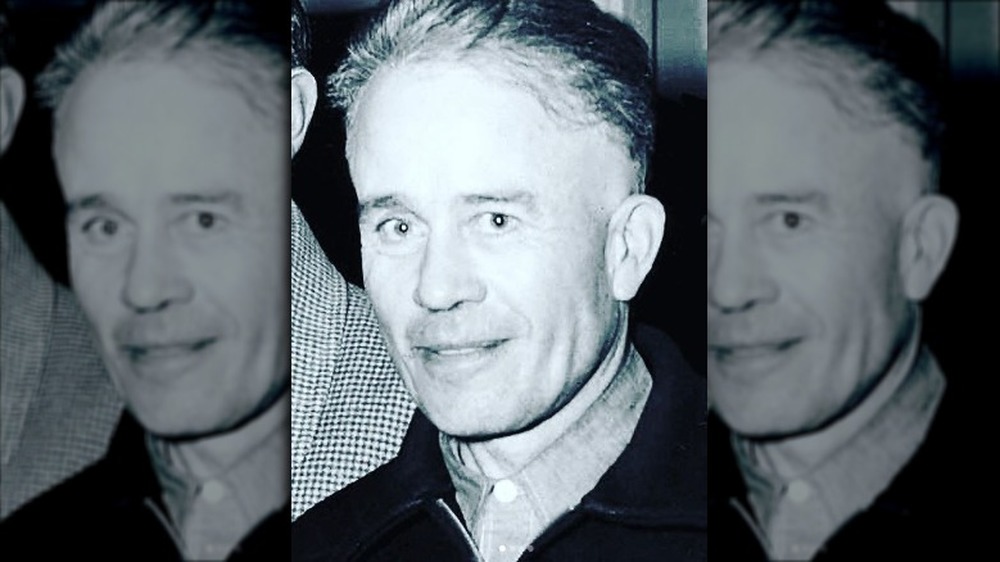Here's How Many Victims Ed Gein Really Had
Ed Gein, the mother-loving, skin-wearing necrophiliac who inspired iconic pop-culture creepy characters including Psycho's Norman Bates and Silence of the Lambs' Buffalo Bill was only convicted of one murder, even though he confessed to killing two women and is suspected of at least four or five more — depending on who's telling the story.
But if your definition of victims includes the dead and buried, loosely one could say that Gein's depravities victimized an estimated 10 more people and their families who had to live with the knowledge that Gein used their bodies to make clothing and housewares, per the Sheboygan Press.
Crime and Investigation reported that Gein told police he would watch the obituaries and dig up women who reminded him of his domineering and deeply religious mother, who died in 1945. He would take the parts he wanted home and get crafty. Other times he would wear their skin around and pretend he was a woman.
Eventually, though, Gein needed more. In 1954 he killed 51-year-old Mary Hogan, a murder he eventually confessed to but was not convicted of, according to Britannica. Hogan's body was only found in 1957 during the investigation into the murder he was convicted of, that of Bernice Worden, 58. That's when investigators found both women's bodies along with the various remains and human body parts that Ed Gein had dug up and transformed into home decor or clothing.
Ed Gein's first suspected victim was his brother
Even though Ed Gein wasn't found out to be a murder and collector of human remains until 1957, in hindsight, suspicions arose that maybe he was responsible for the death of his brother, Henry Gein. This happened in 1944 after Ed reported Henry missing following a brush fire on the family property, only to lead police right to his body when they arrived, according to murderpedia. Henry was found in a place that had not been impacted by the fire and had bruising on his head. Foul play, however, wasn't suspected by officials, and his death was officially caused by asphyxia, murderpedia reported.
The website also reported that four people went missing in the late 1940s and early 1950s near where Gein lived, but the remains of a 15-year-old girl, an 8-year-old girl, and two men were never found. Still, it's suspected that Gein may have had something to do with their disappearances.
Gein was ultimately deemed unfit to stand trial and eventually diagnosed with schizophrenia, per the Sheboygan Press. After his arrest in 1957, he spent most of the rest of his life in the Central State Hospital for the Criminally Insane, later called the Dodge Correctional Institution. He died in 1984 from cancer at the age of 77.
According to Crime and Investigation, he was buried next to his beloved mother in the same Wisconsin cemetery he used to steal body parts from.

